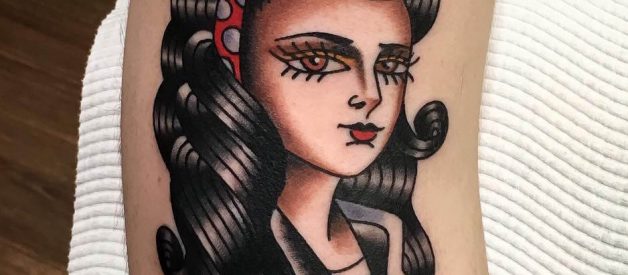
Tattoo Specializations refer to the various styles of tattooing an artist could specialize in. Most artists do more than one style, while many develop their own style by combining two or more existing ones. And some experimental artists who like to push the boundaries often go on to create new styles entirely!
Abstract
Abstract tattoos draw heavily from early surrealist painters. The word ?abstract? refers to ideas that do not have a physical form. In art, this represents work that is complex and layered, and often appears to not have any structure?. Abstract designs are therefore open to interpretation and usually have personal meaning for the wearers of such tattoos.
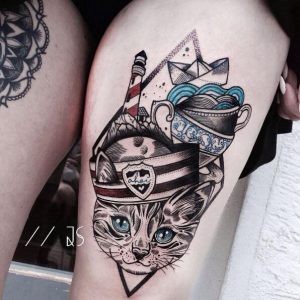
Trash Polka
An emerging trend, trash-polka combines traditional art and realism with abstract imagery and ?trash?, or smudges and smears, and further adds to the chaotic look with a script and often brushstrokes. These tattoos are almost always done in black and red, paying homage to the tattoos of ancient Egyptians as well as modern punk subcultures, though many artists experiment with various colours, elements, and designs within this style.
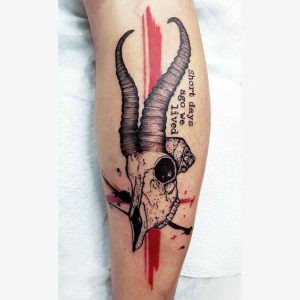
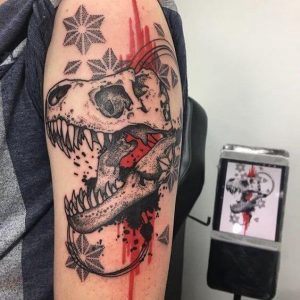
Blackwork
Blackwork, at its core, simply refers to work done using black ink. The style was heavily influenced by tribal Polynesian tattoos. Over time, blackwork has come to refer to a style that has a more macabre aesthetic featuring subjects from horror tales and surrealism.

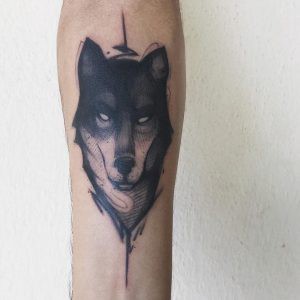
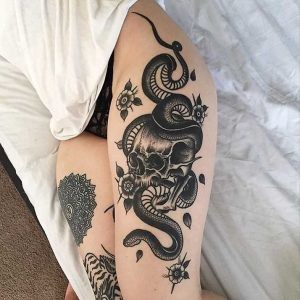
Having said that, this is one of the most experimental styles, and blackwork artists often combine black art with various styles such as dotwork, abstract, geometric, and realism, among many others!
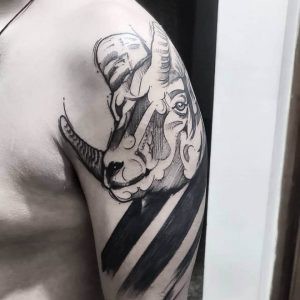
Black & Grey/Greywash
Black, grey, and white inks are used to create a sense of realism in the tattoo and add density and depth without using colour. With greywash, black inks are diluted to create lighter tints which allow for shading to create a more 3D effect.
Negative Space
This style uses the empty space in a pattern to create a design. The blackwork will be done around the ?negative space?, drawing one?s eye to ?what isn?t there?. This is a common technique seen in larger blackwork or blackout pieces.
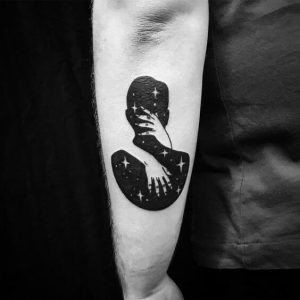
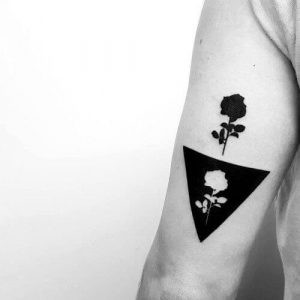
Silhouette/Shadow
Using blackwork combined with white and grey shading, tattoos are created to look like silhouettes and shadows. These minimalist tattoos are great if you?re looking to get a tattoo that?s similar to realism but not quite as detailed or intense.
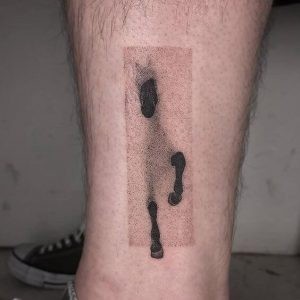
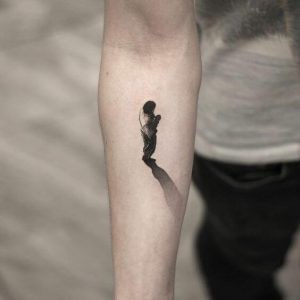
Brushstroke
This style uses brushstrokes as part of the design to create some beautifully artistic pieces. Brushstrokes are often done in black, but colours are not uncommon in this style. Modern tattooists use brushstrokes in very interesting ways, combining it with a variety of subjects to create very unique pieces. This makes brushstroke designs one of the more difficult styles to replicate.

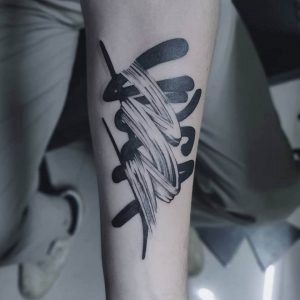
Watercolour
Just as the name suggests, watercolour tattoos are designs that look like they were painted directly onto your skin using watercolours and brushes. Because of this, ?watercolour? is often used interchangeably with ?brushstroke?, since watercolour tattoos look like colour versions of brushstroke tattoos.
While watercolour tattoos might look abstract and simpler than other styles, it takes skill to create the brushstrokes and effects that make the tattoo look like a watercolour painting. This style is extremely popular right now due to its artistic look as well as its use of softer lines and shading.
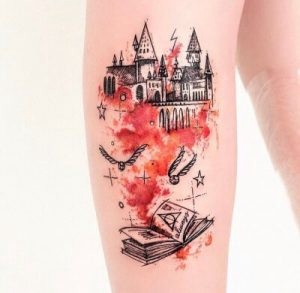
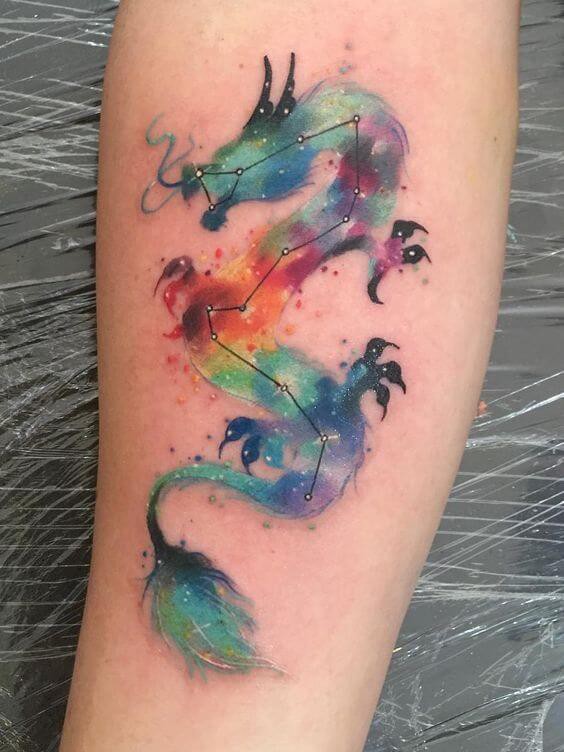
Dotwork
Unlike other styles that create designs using line-work, dotwork tattoos use individual dots to build the entire design in a tattoo. Many artists use a stick-and-poke method with a single needle instead of a tattoo machine to create dotwork tattoos. This style is often merged with others, such as blackwork, abstract, and realism, to create some very detailed pieces.

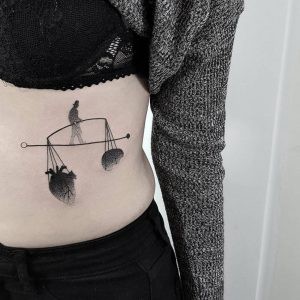
Pointillism
Pointillism takes the concept of dotwork and expands on it. Using dots in tight clusters, pointillism creates dense shapes, blocks, shading, and much more, such that you sometimes can?t even tell it?s a dotwork piece until you get a bit closer!
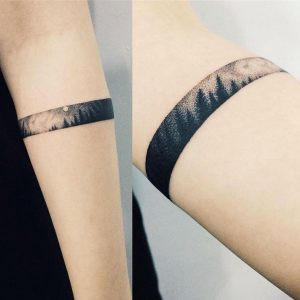
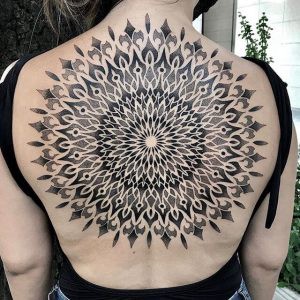
Geometric
Geometric styles use basic geometric shapes to create everything from minimalistic to detailed tattoos using a wide range of subjects.
The concept of geometric tattoos lies rooted in early science and mathematics as well as spirituality, which identified these shapes as being the core of all life ? everything is made of the basic shapes if you know what to look for! Geometric styles often use sacred geometry as the basis for their designs and are usually combined with line-work to create intricate patterns.
Mandalas are some of the most popular tattoo designs at present. The intricate patterns in a mandala represent the universe and the part we play in it.
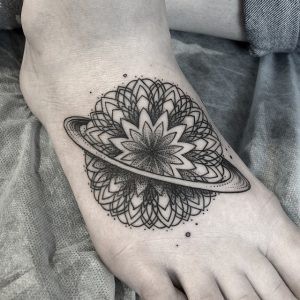
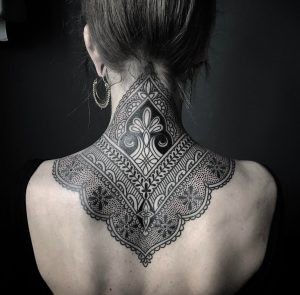
Polygon
Polygons use 2D shapes formed out of straight lines ? such as triangles, quadrilaterals, pentagons, rectangles, and hexagons as the base on which a tattoo is built, often to create more abstract pieces with varying subjects.
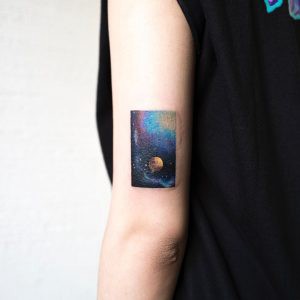
Illustrative
Yet another experimental style, illustrative tattoos draw from an extremely wide range of art styles ? from abstract and surrealism to etching and even calligraphy. Like its name, this style tends to look quite like the illustrations one would see in a storybook. Because of how fluid the style is, it allows artists to be truly expressive and creative which leads to some really amazing designs!

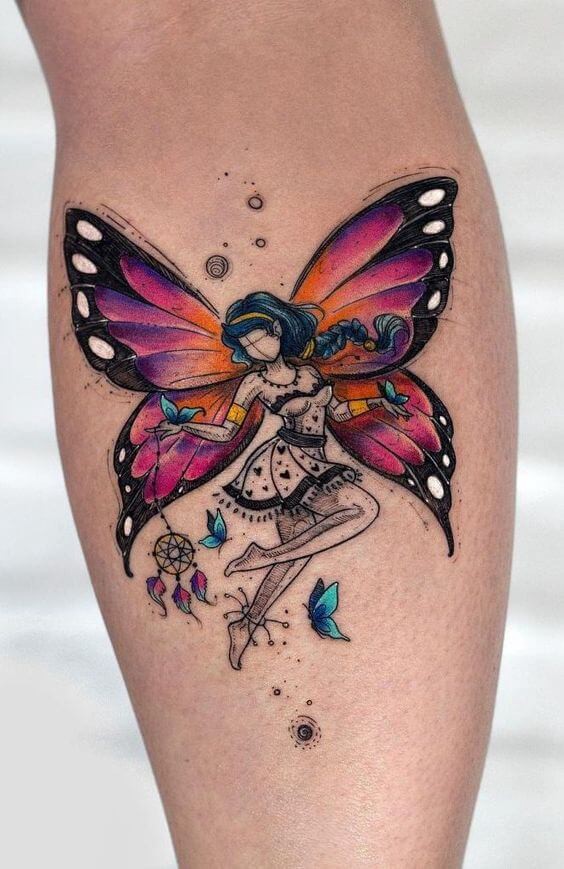
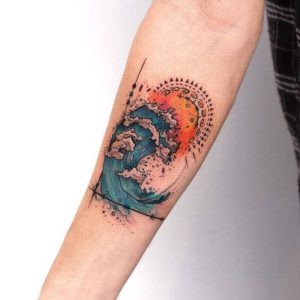
Ornamental
Ornamental designs usually feature spiritual imagery, such as mandalas as the core of the tattoo, and usually add subjects like flowers and crystals around this design. These designs are usually very delicate and resemble dainty jewelry. But don?t take that to mean they?re only to be looked at! These designs can often have deep spiritual meanings.
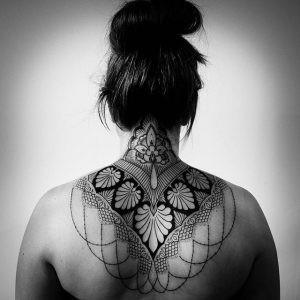

Minimalism
Simple and understated ? that?s at the core of minimalism. These tattoos are almost always smaller in size and feature very simple linework or patterns as opposed to the detail-heavy styles like realism.

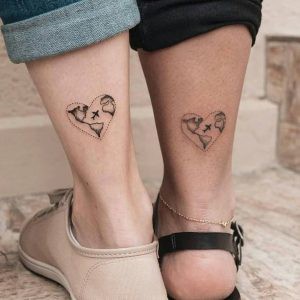
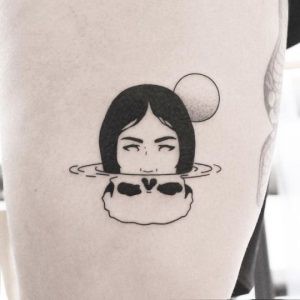
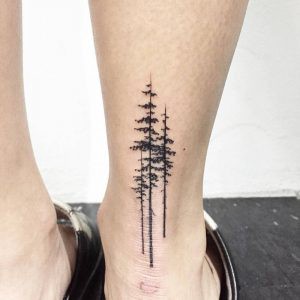
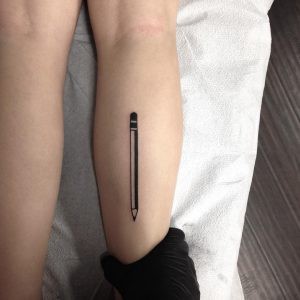
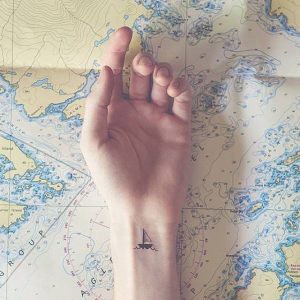
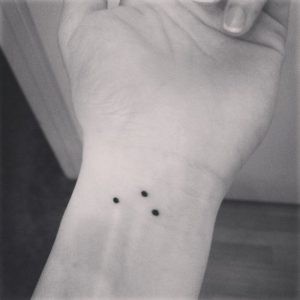
This doesn?t, however, mean you can?t get a minimalist tattoo that has some detail in it! What makes a tattoo minimalist is how understated it is.
Outline and Line-Work
If you?re more into basics, line-work is for you. This style uses simpler lines in very minimalistic designs, and very rarely incorporates more detailing or shading. If you?d like something even more understated, a simple outline with absolutely no filling or shading will be perfect for you!
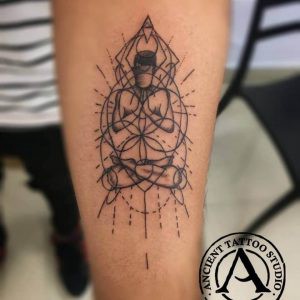
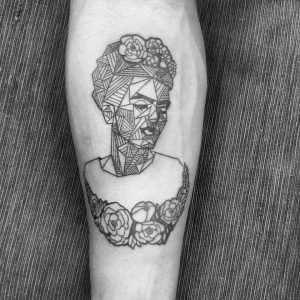
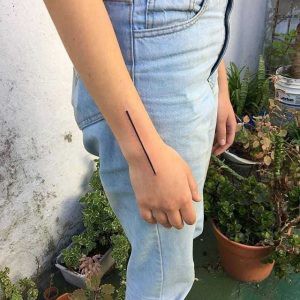
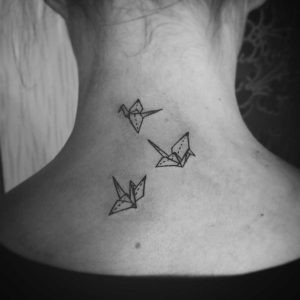
Fine-Line
Fine-lining is a relatively newer style that uses thin, delicate lines to create a design.

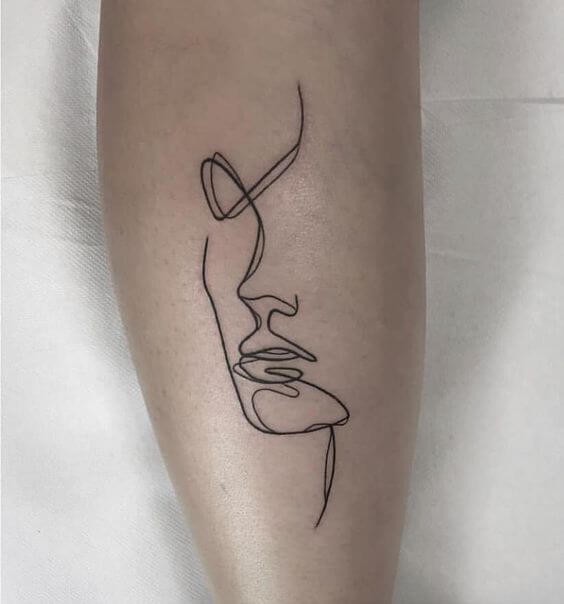
Sometimes used as is, this style can also be combined with more denser styles, such as realism, to add a more delicate look to what would otherwise be a very intense tattoo.
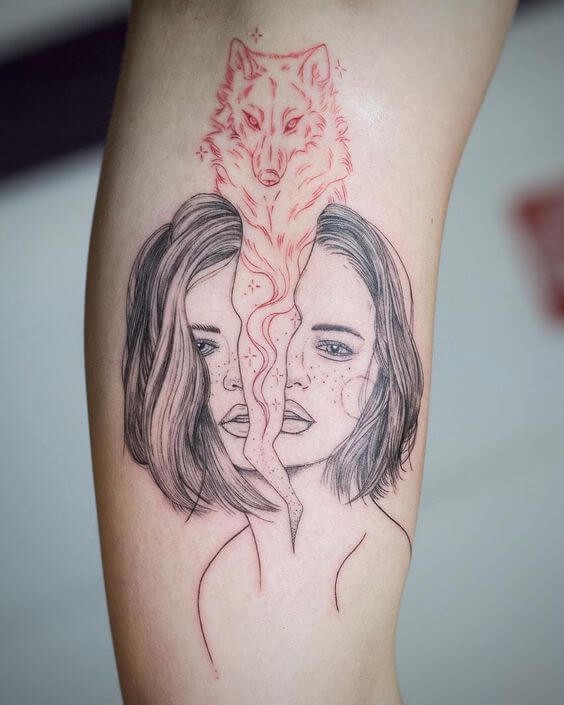
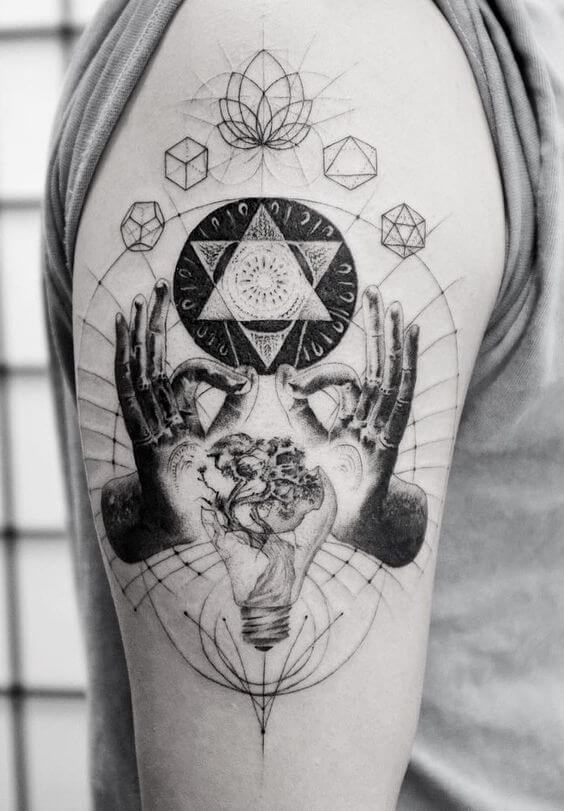
Sketch-Style
Building on line-work, sketch-style has the quality of looking exactly like a sketch you?d find in your artist?s sketchbook. Sketches are often drafts, meant to be completed with details, shading, maybe even colours. The rough, unfinished look of sketch-style tattoos give off the vibe of something that is in progress, but still beautiful as is.
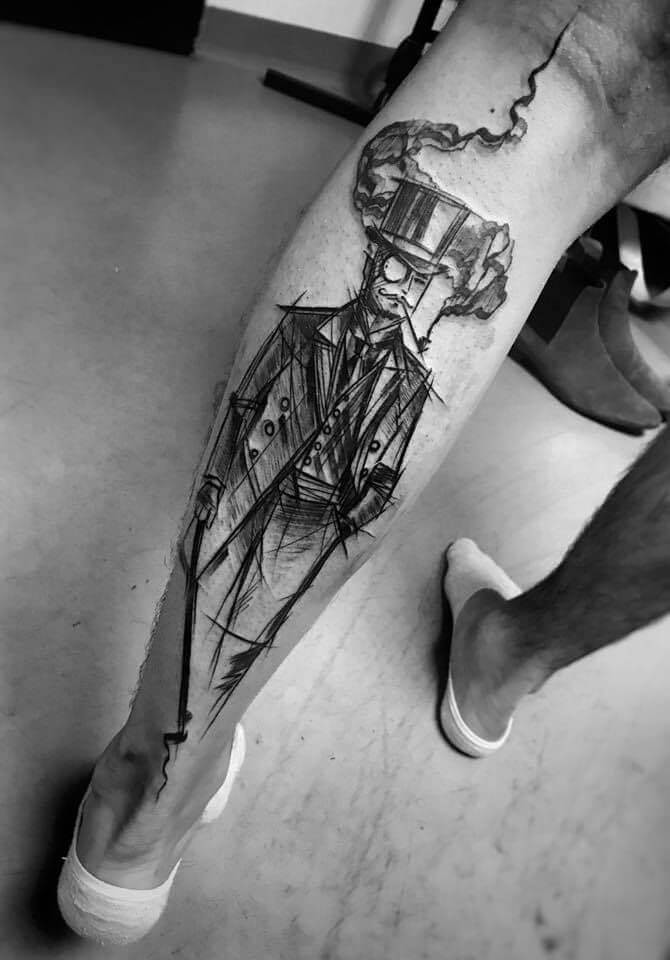
Neo-Traditional
This style evolved from the more traditional styles of tattooing. While it continues to use the same bold black lines and bright colours, it also features more modern styles such as illustrative and geometric and brings in more nature-inspired elements including floral patterns and animals. Due to this, the neo-traditional style has a much more artistic quality to it that makes it visually similar to early painters.

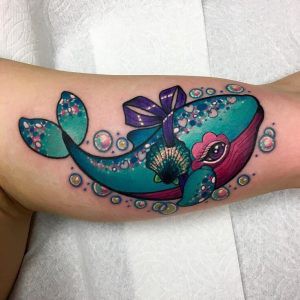
Glitch
This unique style features distorted imagery, kind of like a TV with bad reception. Often linked to the punk subculture due to it being a style that breaks all ?tradition?, this style of tattooing takes designs from more traditional styles like blackwork and distorts them to create some truly unique pieces.
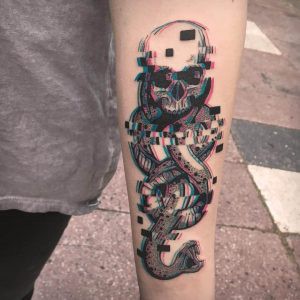
New-School
New-School was an aesthetic that emerged in the 80s and 90s ? and it shows! The style is extremely vibrant and colourful, often featuring an extremely cartoonish, animated style of inking. If you?re still into the electro-pop of the 80s or love the retro look, you?re probably going to adore this style!
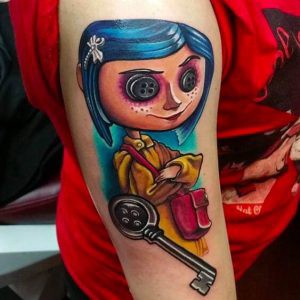
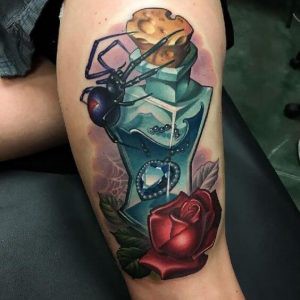
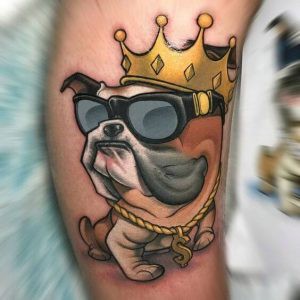
New school takes elements from traditional styles, such as the bold lines and vibrant colours, as well as the neo-traditional styles? lean towards more artsy designs, and throws in a retro vibe to tie the whole thing together.
Cartoon/Anime
Emerging in the 90s, this style uses more modern elements to create designs. The cartoon style draws inspiration from the animated cartoons of the 90s, which included Japanese anime and art styles from manga.



Graffiti
Graffiti uses street-style art to create tattoo designs that, much like the Glitch style, are often associated with a punk subculture due to graffiti itself being illegal. But unlike Glitch, Graffiti uses more traditional elements of black lines and structured designs, combined with more contemporary script and cartoon styles.
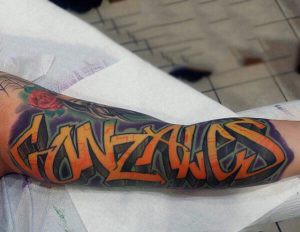
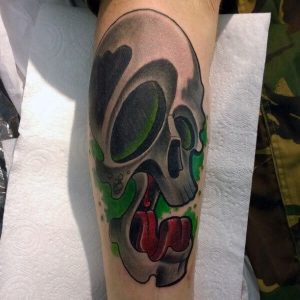

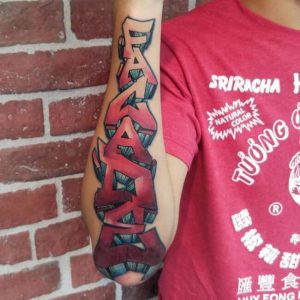
The graffiti style features common subjects usually seen in graffiti art, including pop-culture references, objects from the 80s, and popular memes and ideas.
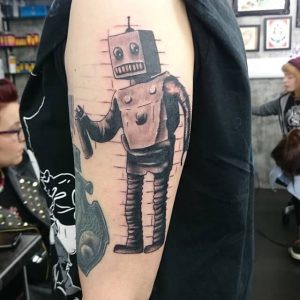
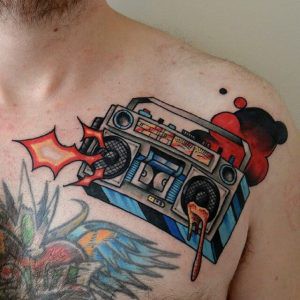
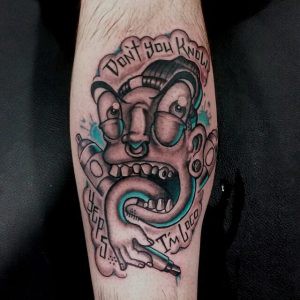
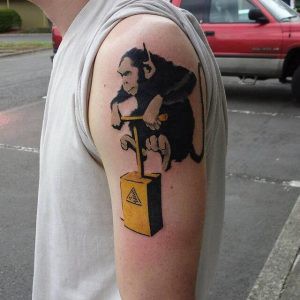
Sticker/Patch
A new addition, sticker tattoos are all the rage right now. Using the same elements as other new school styles, sticker tattoos are designed to look exactly like you slapped a sticker on your body. These tattoos usually feature beloved pop-culture characters, and are also referred to as ?patch tattoos?.
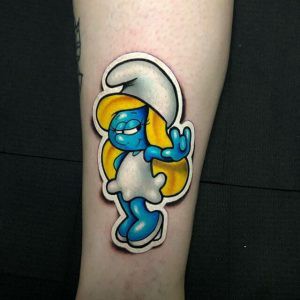
Some look more like the stickers we used to get as prizes, while others have an embroidered look.
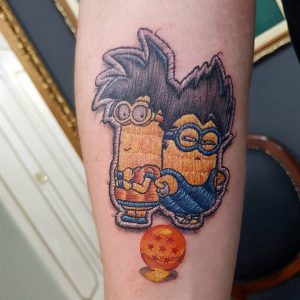
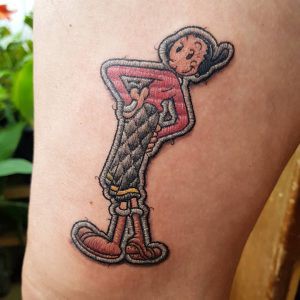
Realism
Realism is an ancient style that dates back to the early painters of the Renaissance period ? which, put simply, means it?s really old! As a style of tattooing, realism has taken the art of creating lifelike drawings and applied it within the art of inking. With subjects ranging from portraits of people and animals to nature-inspired imagery, to everyday objects and beyond, realism remains one of the most popular styles of tattooing.
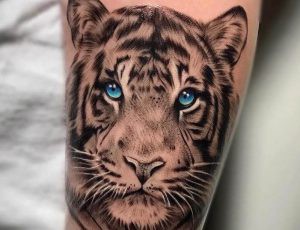
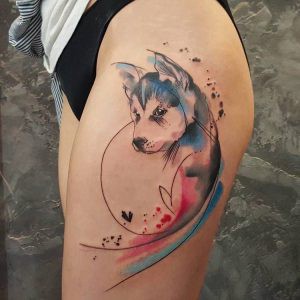
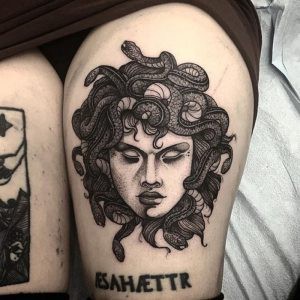
Realism doesn?t always have to be portraits though! It can also feature anatomical designs, such as this one.
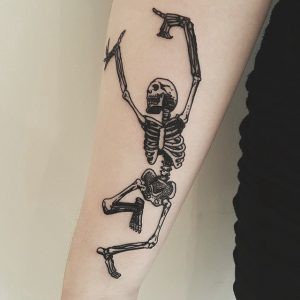
Realism can also be used to depict objects.
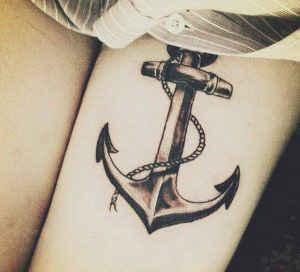
Hyperrealism
As the name suggests, hyperrealism is essentially an advanced version of realism. Realistic designs are transformed into 3D versions, full with shadows, highlights, and detailing and shading that makes them jump out at you ? almost like a photograph! The most common designs done in this style are photorealistic portraits.
Illusion
Taking hyperrealism even further are illusion tattoos, such as biomechanical body parts or optical illusions. These styles are characterized by great detail and depth that make the tattoos really pop and look real, often so real it makes you stop and think twice about what you?re looking at!
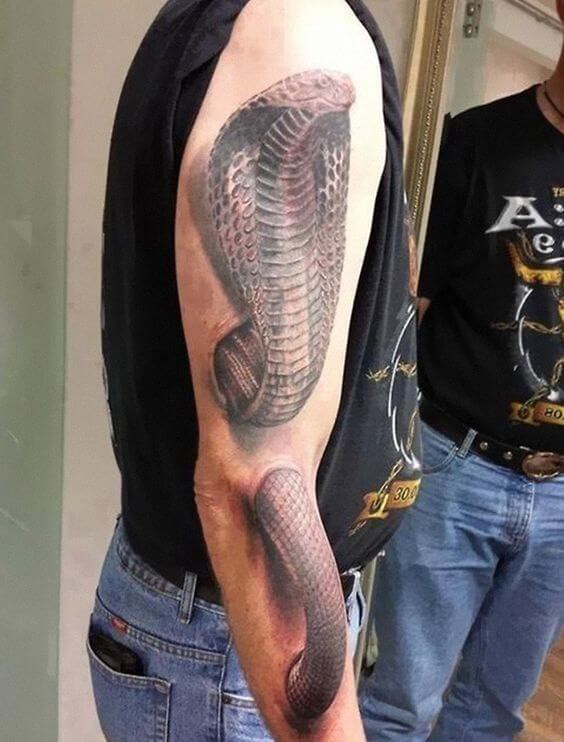
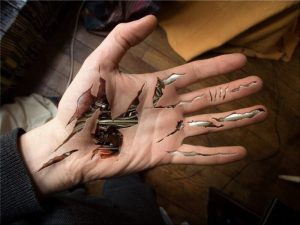
Script/Lettering
Script tattoos use text to create a design. While the most common script to get tattooed is a name, you can get anything inked a minimalist tattoo featuring the lyrics to your favourite song to a quote or word that inspires you to a religious scripture or passages from your favourite novel or poem!
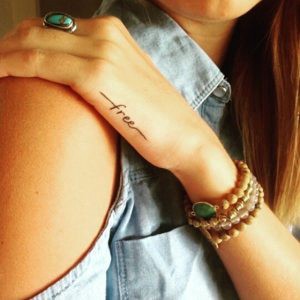
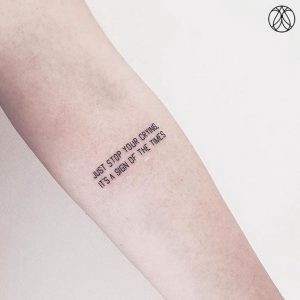
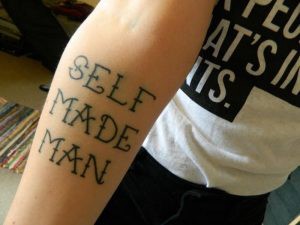
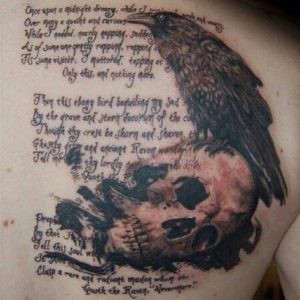
It?s important to point out here ? if you?re getting a script tattoo, make sure you get the spelling right!
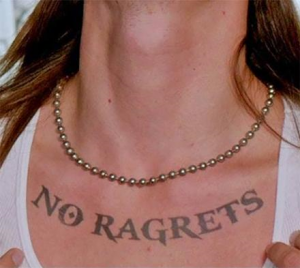
Ambigram
Ambigram tattoos are text tattoos that can be read in multiple ways. For instance, a tattoo that says ?love? but when reversed (such as in a mirror-image) says ?hate?. These designs are great for hiding a message within a tattoo!
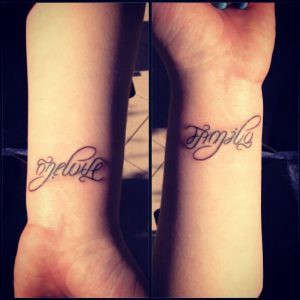
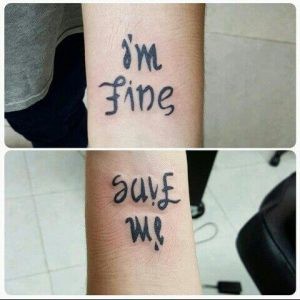
Traditional
Traditional styles are characterized by bold black lines and bright colours, inspired by Polynesian tribal tattoos and traditional Japanese tattoo styles like Irezumi, respectively. The style became popular after British sailors that voyaged across the globe returned with tattoos from Polynesia and Asia. Eventually, this style travelled to America, where it came to be known as Old-School American (OSA). Now, the style is simply called ?Classic?.
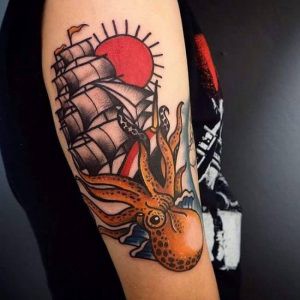

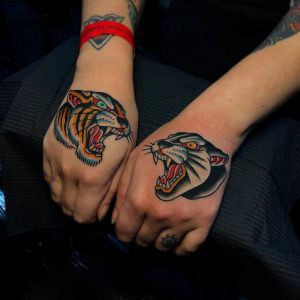
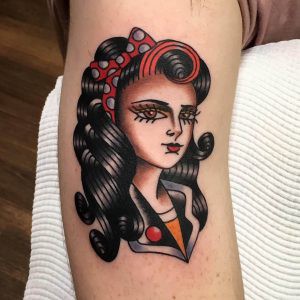
Chicano
The term ?chicano? was originally a derogatory term used in America towards people of Hispanic descent. The group eventually reclaimed the term, and sometime during the 40s, the Chicano style of tattooing was born. The style was originally created using sewing needles steeped in black ink. It draws on the traditional use of black ink, but has a much more illustrative quality to it, making it something in between traditional and neo-traditional. Common subjects of this style include Christian imagery, flowers, and skulls. One design that is extremely popular is the extremely vibrant and decorative ?sugar skulls? or ?Calavera? which are used in the Mexican celebration of the Day of the Dead and the Roman Catholic holiday All Souls? Day.
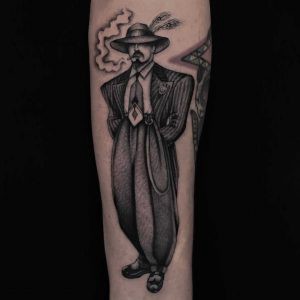
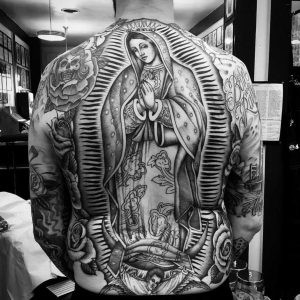
Japanese
Japanese styles of tattooing usually feature very large and detailed pieces full of colour. They have a flowing effect to them owing to the inclusiong of winds and waves within the background of each design. The subjects in these tattoos tell tales of Japan?s past. The most widely known Japanese style of tattooing is ?Irezumi?, which means ?inserting ink?.During the 1800s, these styles became associated with criminal activity and tattooing was made illegal. Eventually, Japanese tattooing became popular internationally, and it is now one of the most sought-after styles.
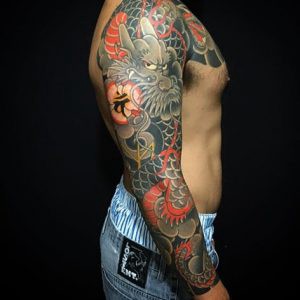
Tribal
Tribal tattoos collectively refer to indigenous art that has been practiced in tribal and native communities for thousands of years. These styles of tattooing are characterized by bold, black lines and large areas of black shading and are done using traditional hand-made tools. This makes them extremely painful and time-consuming. Modern tattooists use a mix of traditional tools and modern machines.
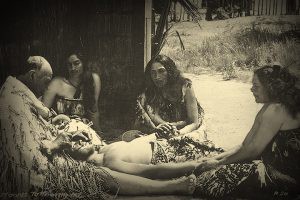
East Asian
These tribal styles are very similar to Polynesian ones with big bold black designs but differ in their style and subjects, which usually feature culturally significant symbols, such as the sun. They also often feature imagery that tells their history.
South Asian
South Asian styles of tattooing are some of the most diverse, both in design and in the reason for tattooing. While some tribes tattoo for aesthetic reasons, others tattoo to record the history and glory of their tribes. Still others tattoo for more specific reasons, such as to make their women ?less desirable to other tribes who might otherwise try to steal them?.
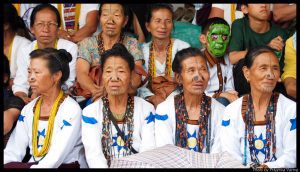
These styles usually draw heavily from nature and feature plants, animals, and elements, as well as the symbols and patterns in the objects around them ? such as the embroidered patterns in their clothing.
Modern tattooing in South Asia often combines local tribal themes and designs with traditional tattoo styles to create pieces unique to the region.
Native American
Native American tattooing is similar in many ways to Polynesian styles, but their designs are different. Each tribe had its own style of tattooing, with each design being unique and meaningful to the individual being tattooed. Native American tattooing was done for healing and protection and was deeply spiritual.
While much of the Native cultures and traditions were destroyed due to invaders and colonization, these ancient arts are making a comeback in recent times. The early methods of tattooing in Native communities use a sewing needle with a thread soaked in dye to poke the tattoo into the skin.
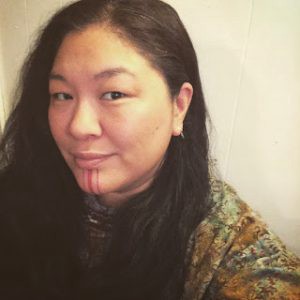
Some subjects in Native tattoos are sacred to them, such as the wolf who is a deity for some of these communities. The wolf is now an extremely popular choice in tattoo designs.
Polynesian
The most popular of the tribal styles of tattooing are the Polynesian styles which became known to the world through the voyages of James Cook and his fellow sailors. This style features large extensive black tattoos and the designs usually include the tribe?s history as well as the individual?s accomplishments, social status, and family crest, and might also include imagery with deep personal meaning.The Maori style, in particular, has inspired many other styles of tattooing, such as Old-School American and Blackwork, and continues to do so even today.
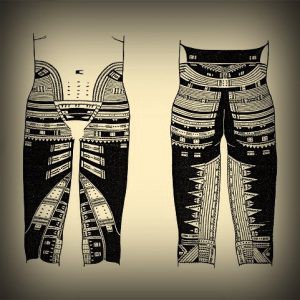
Bands
Of Polynesian tribal tattoos, armband tattoos are one of the most popular. The simpler black armband tattoos usually imply loss and are worn as a symbol of mourning and remembrance. Over time, these bands have evolved to take on a wide range of meanings depending on the design and subject of the tattoo.
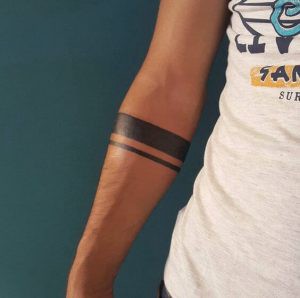

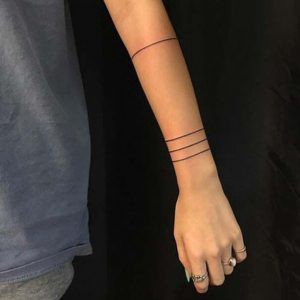
Armbands don?t always have to be strictly black lines or minimalist, though! Artists love to experiment with this type of tattoo, so we have a massive catalogue of armband tattoos to be inspired by!
Found the style for you? Head on over to jhaiho.com and book your tattoo appointment today!
Be sure to follow us on Instagram for more tattoo inspiration!
